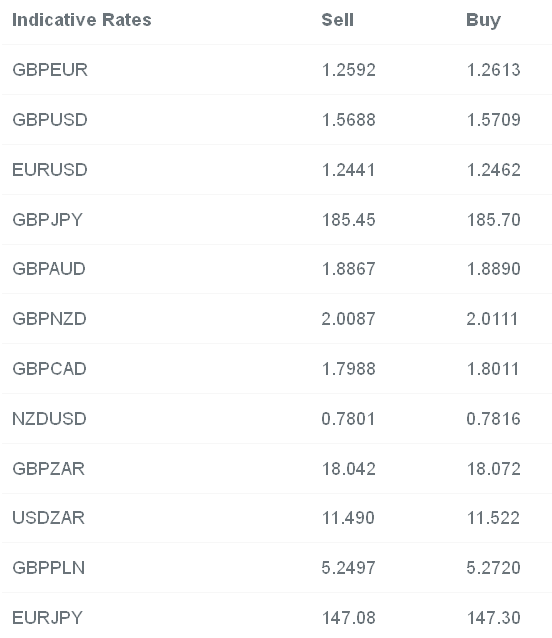TLTRO Lending To Show The ECB Still Has Lots Of Work To Do
Jeremy Cook | Dec 11, 2014 04:27AM ET
Finally! A day with some economic data that may be able to wet my whistle as we move through the month of December. Yesterday’s session was highlighted exclusively by movements in Oil prices once again. The declines in commodity markets have continued apace as the issues of oversupply and under demand continue to be worked through the markets. Yesterday’s admission by OPEC that demand for their oil will fall to a 12 year low in 2015 sent the price to fresh five year lows. Sympathy for a cartel that has had world markets by the throat in the past is also sinking dramatically. Needless to say it is the USD that has remained in favour against those oil exporting commodity currencies that have been eviscerated in recent weeks. The ruble remains the main laggard but others such as the Mexican peso and the Norwegian krone have also lost large amounts.
Speeches from ECB members continued to paint a picture of an economy that is in need of stimulus but without giving a real clarification of what will be done. Yesterday, Peter Praet, the ECB’s Chief Economist, warned that the moves in oil prices would push inflation in the Eurozone below 0% in the coming months while Ardo Hansson, the Governor of the Bank of Estonia, noted this morning that it is too early to judge on further stimulus from the ECB in January.
I believe both are correct at the moment. Inflation is coming lower and that the January ECB meeting may not be the elixir of life that everyone is looking for.
Overnight the focus was back on central bank action from the Reserve Bank of New Zealand. Recent meetings from the RBNZ have been characterised by a feeling that policy makers are waiting for the economy to catch up with the policy that has already been launched. The tone has been neutral as they have sought to keep the NZD from strengthening.
Last night’s meeting saw some more hawkish comments from the central bank however, noting that “some further increase in the official cash rate is expected to be required at a later stage” while also making sure to emphasise that the market knew that the current level of the NZD was still “unjustifiably and unsustainably high”. The NZD has rocked higher on the thoughts of rate hikes but we and the RBNZ maintain that further depreciation is expected.
Today’s European session is an interesting one. We will get the latest TLTRO numbers from the ECB which will tell us how much money European banks have borrowed from the ECB as part of the latest program supposed to increase lending to the continent’s real economy.
As we noted on Monday, expectations have fallen dramatically and prospects are that the number will fall short of EUR150bn. That seems like a lot of money but is nothing compared to the EUR270bn that Eurozone banks are due to repay to the ECB between now and February. These repayments stem from loans made in 2011. With Draghi’s desire to take the European Central Bank’s balance sheet close to EUR3trn – EUR1trn higher than current levels – something else must be done. Anything lower than EUR120bn and we could be looking at another shift lower for the single currency.
This afternoon’s retail sales report for November will also be closely watched as the markets wait in anticipation for the economic power of the 20th century, the US consumer, to re-join the party. Lower oil prices, increased job prospects and wider wealth effects from asset price movements has had a significant effect on consumer confidence. The disposable income boost from lower prices from Black Friday and at the pump should see retail sales move higher this afternoon.

Trading in financial instruments and/or cryptocurrencies involves high risks including the risk of losing some, or all, of your investment amount, and may not be suitable for all investors. Prices of cryptocurrencies are extremely volatile and may be affected by external factors such as financial, regulatory or political events. Trading on margin increases the financial risks.
Before deciding to trade in financial instrument or cryptocurrencies you should be fully informed of the risks and costs associated with trading the financial markets, carefully consider your investment objectives, level of experience, and risk appetite, and seek professional advice where needed.
Fusion Media would like to remind you that the data contained in this website is not necessarily real-time nor accurate. The data and prices on the website are not necessarily provided by any market or exchange, but may be provided by market makers, and so prices may not be accurate and may differ from the actual price at any given market, meaning prices are indicative and not appropriate for trading purposes. Fusion Media and any provider of the data contained in this website will not accept liability for any loss or damage as a result of your trading, or your reliance on the information contained within this website.
It is prohibited to use, store, reproduce, display, modify, transmit or distribute the data contained in this website without the explicit prior written permission of Fusion Media and/or the data provider. All intellectual property rights are reserved by the providers and/or the exchange providing the data contained in this website.
Fusion Media may be compensated by the advertisers that appear on the website, based on your interaction with the advertisements or advertisers.